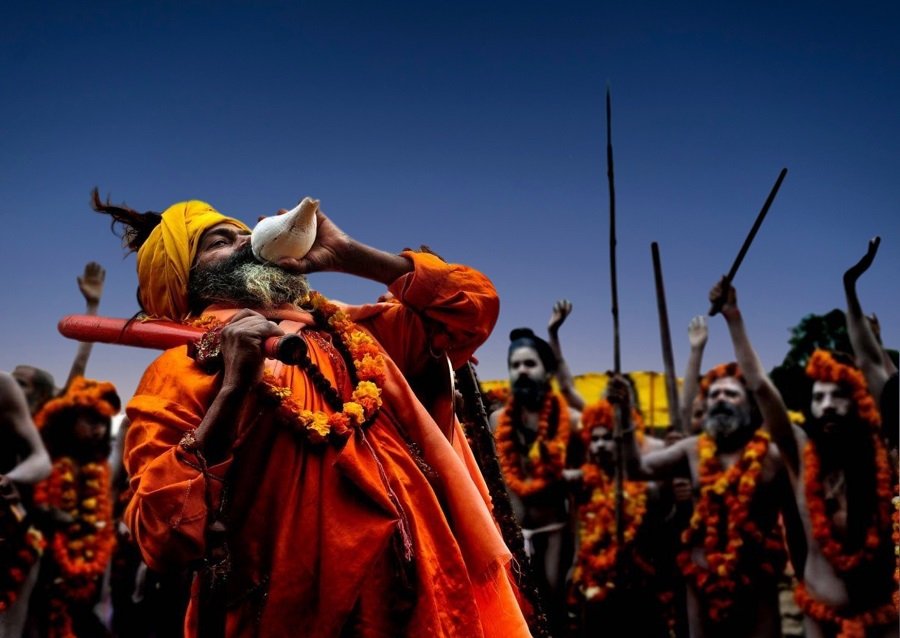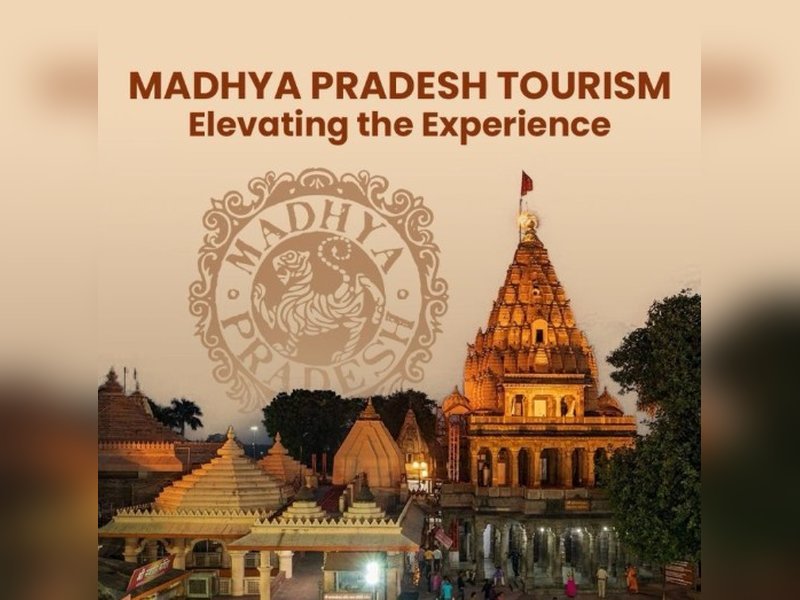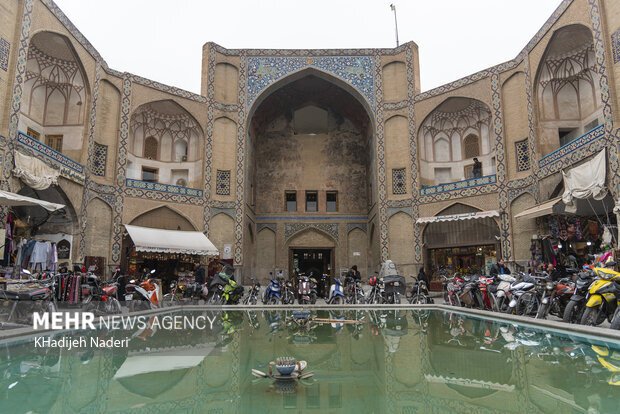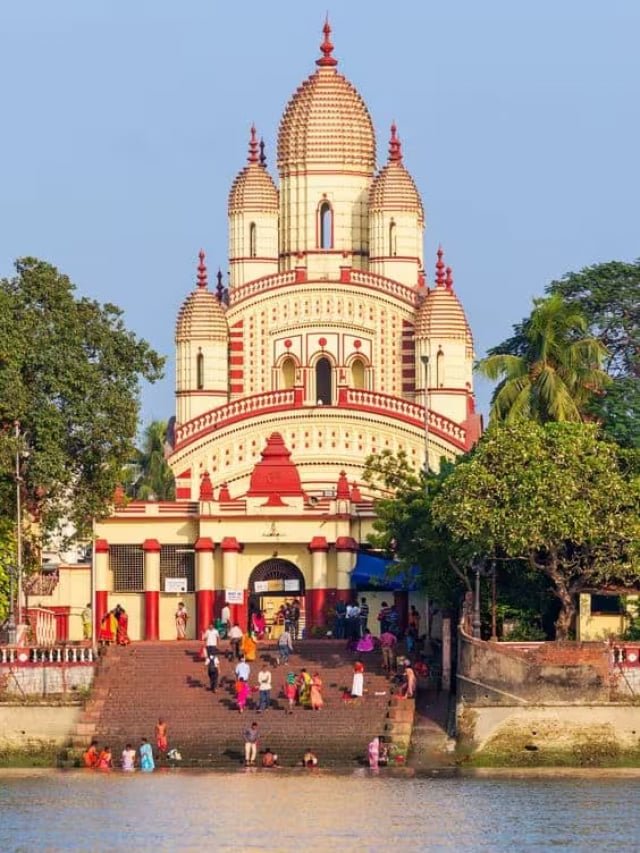Spiritual Travel
Shaping Religious Tourism in India – Uttar Pradesh Leads the Way

Uttar Pradesh is experiencing a renaissance in religious tourism, evolving from its traditional image as merely a Taj Mahal destination. With significant footfalls in cities like Varanasi, Ayodhya, Prayagraj, and Mathura-Vrindavan, the state is now promoting itself as a hub of spiritual and cultural exploration.
In India, the concept of tourism began with ‘Teerthatan’, where people travelled for religious and spiritual purposes. Indian domestic travel always relied on travel for religious purposes when people travelled for pilgrimages, which is somewhat of a mandatory exercise in Hinduism.
Shared Motivations of Spirituality and Exploration
A cursory analysis of the map of India will show that the entire length and breadth of the country, north to south and east to west, is dotted by important religious sites, encouraging people to cover the entire country. Virtually all religions besides Hinduism propagated travel for pilgrimages, including Buddhism, Jainism, Sikhism, Judaism, Christianity, and Islam. This kind of travel came so naturally that we seldom considered this form of travel an economic activity. Still, it has always supported economies as a natural benefit and is also the most sustainable and social form of tourism to date, at least in India.
India’s diverse religious sites have catalysed a remarkable rise in spiritual tourism, especially in the post-COVID era, accounting for nearly 60 per cent of domestic travel. According to the Ministry of Tourism’s 2023 statistics, 1,433 million domestic tourists visited pilgrimage sites in 2022, accompanied by 6.64 million international tourists. These numbers show a significant rebound from the pandemic’s lull when domestic spiritual tourism recorded 677 million visitors in 2021 and only 1.05 million in 2020. Globally, religious tourism has also been on the rise—Mecca sees 15.4 million visitors annually, and Saint Peter’s Basilica in the Vatican attracts 6.76 million.
As a welcome surprise, very recently, demographic profiles of travellers for spiritual travel have changed. Where this kind of travel was associated with the aging population, rural population, and most travellers came from not-so-economically well-off backgrounds, now it is the younger lot, urban population, and affluent class choosing to travel on religious tracks.
Growth of Religious Tourism in Uttar Pradesh
In Uttar Pradesh, there is an annual footfall of 540 million in the four religious cities of Varanasi, Ayodhya, Prayagraj, and Mathura-Vrindavan alone. India could see an additional 50 million to 100 million tourists a year on account of the inauguration of Ram Mandir in Ayodhya. Add to this the footfall in Prayagraj during Kumbh, which falls once every six years. In 2017, it was 250 million within a limited period of less than two months. In 2025, Prayagraj will yet again be hosting Maha-Kumbh beginning from January 13, 2025, and it is expecting 500 million visitors. Beyond Uttar Pradesh, Tirupati Balaji receives around 50 million tourists annually and is considered a temple with the greatest number of visitors.
Expanding Horizons through Spiritual Tourism
Uttar Pradesh, once primarily recognised for the Taj Mahal in Agra, had long relied heavily on this iconic monument for its tourism industry. This singular focus, however, overlooked the state’s vast potential in other areas. Today, the tourism landscape of Uttar Pradesh has evolved significantly, with a broader emphasis on spiritual tourism destinations. This expansion has revealed the untapped opportunities that could have transformed the state’s tourism profile much earlier.
The State of Uttar Pradesh has been working consistently to leverage the power of tourism by way of four-pronged strategies: identification, planning, time-bound implementation, and quantifiable monitoring. Also, mapping tourism circuits of religious importance in the state was a huge step in this direction. Be it Ramayana, Krishna, Buddha, Jain, or even the great Sufi saints, all were mapped strategically in Uttar Pradesh, with a primary objective to boost the state’s economy through tourism in a time-bound manner.
In 2018 and later in 2022, the Uttar Pradesh government came up with a very futuristic tourism policy that has attracted huge investments in the state, and the state stands out as an example of planned tourism development for many other states of India to take clues from. The policy not only incentivises tourism projects but also pays huge attention to employment generation, participation of women in tourism, skilling youth for tourism, and more. The policy is quite holistic in nature and deals with rural, agricultural, ecological, urban, and adventure tourism in equal measure, confirming the guidelines of responsible tourism. As a result, tourism in Uttar Pradesh is emerging as an economic equaliser, spreading benefits in all regions of the state.
Promoting Spiritual Centres Beyond Religious Identity
With respect to tourism, it will not be justified to only project a destination as just a religious centre, as that only brackets interests and limits the destination’s profile. The best projection of such destinations would be as a ‘Spiritual Centre’ and a ‘Centre of Human Idealism’, unbracketing these from the brackets of religion and resonating with the concept of spiritualism, which is secular in nature, much broader in meaning, and in tune with ‘Sanatan dharma’.
Often, religious destinations in India thrive and focus all their efforts on one main temple or, at the most, a very few countable others. Such a profile of a destination only limits its economic capabilities and diminishes tourism potential. To counter this, it is essential to have early morning and evening activities. These may include some spirituality-related experiences, such as walking tours, story sessions, river entertainment, light and sound shows, live musical and theatrical performances, etc. Overemphasising a single temple visit can diminish a city’s broader appeal and limit the overall time tourists spend there. When a destination offers a variety of attractions and experiences, visitors are more likely to extend their stay beyond their primary reason for visiting, whether it be a shrine visit or a specific activity. This encourages more profound engagement with the destination.
It is also important that we explore, develop, and market the surrounding excursions. Taking an example of Ayodhya, India’s newest destination, the important places around it are Chapiya (30-minute drive), which is the birthplace of Swami Narayan, the deity of Akshardham; then there is Kodar, the birthplace of the father of Yoga, Maharishi Patanjali (40-minute drive); similarly, only 2 hours away from Ayodhya is Maghar, where Saint Kabir’s memorial stands.
Religious Tourism incarnated as Spiritual Tourism, with changed demographics and understanding is all set to leverage the power of tourism in India and the positive effects of the efforts in this direction are quite evident with the state of Uttar Pradesh leading the way.
About the Author: Prateek Hira is the President and CEO of Tornos and heads multiple tour companies in India and internationally. He chairs tourism associations and FICCI’s Tourism Committee in Uttar Pradesh. An accomplished tourism researcher and educator, Prateek sits on the boards of various universities and teaches tourism management at institutions across India and the world.
Spiritual Travel
MP now heartbeat of global tourism, 134.1 million tourists visited last year

Jaipur, July 19 (IANS) With its sweeping landscapes, sacred rivers, vibrant culture and world-class heritage, Madhya Pradesh is no longer just the ‘Heart of India’ — it’s becoming the heartbeat of global tourism.
This message rang loud and clear during the Madhya Pradesh Tourism Board’s roadshow held at Jaipur’s Jai Mahal Hotel on Friday.
Speaking to a packed event of tourism stakeholders, filmmakers, and hospitality professionals from both Rajasthan and Madhya Pradesh, Additional Managing Director of Madhya Pradesh Tourism Board, Bidisha Mukherjee, highlighted the state’s soaring popularity.
In 2024 alone, Madhya Pradesh welcomed 134.1 million tourists, with 70 million visiting for religious and spiritual experience, to Mahakaleshwar and Omkareshwar Jyotirlingas, Chitrakoot, Maihar, and Amarkantak, the sacred origin of the Narmada River.
But spiritual tourism is just one facet of Madhya Pradesh’s appeal.
“We want to showcase the hidden gems of Madhya Pradesh to the world,” Mukherjee said.
“From majestic temples to dense jungles, from tribal art to local cuisine — we’re creating experiences, not just sightseeing tours. We’re building a sustainable, immersive, and community-led tourism model that speaks to the soul of every traveller.”
In an interesting pitch, she proposed an exciting expansion of the iconic Golden Triangle tourism circuit which she said can work miracles if turned into an arch.
“Imagine tourists travelling from Agra to Gwalior, then exploring the Orchha-Gwalior-Datia belt,” she said.
“Those coming from Chittorgarh can easily explore Mandsaur, Ujjain and Omkareshwar — blending Rajasthan’s desert heritage with Madhya Pradesh’s water sports and adventure tourism offerings in a single trip.”
She also added that Madhya Pradesh is home to three UNESCO World Heritage Sites — Khajuraho, Sanchi and Bhimbetka — and 15 others on India’s tentative list, making up a quarter of the country’s UNESCO sites.
Madhya Pradesh also boasts a vibrant cultural identity, with tribal traditions like the Bhagoria dance, Gond paintings, and the Narmada Parikrama pilgrimage recognised on India’s National Intangible Cultural Heritage list, she said.
With titles like Tiger State, Leopard State, Cheetah State, and even Vulture and Gharial State, Madhya Pradesh has something for every nature lover, Mukherjee added.
It is a wildlife haven and with all these products, the number of tourists soared from 11.41 crore to 13.42 during 2023 to 2024, she said.
With the upcoming Tourism Policy 2025, Madhya Pradesh is also rolling out the red carpet for investors, she added.
The policy offers attractive incentives, including 90-year land leases, low stamp duties, and e-tender processes for accessing land, wayside amenities, and heritage properties.
Ultra-mega tourism projects with investments more than Rs 100 crore can even be allocated land directly.
The Madhya Pradesh Tourism officials also said: “It is not tourists who are flocking to Madhya Pradesh — the film industry is also being lured to the state. With a dedicated Film Facilitation Cell, shooting permissions are now fast-tracked. Since the launch of its film policy, more than 400 film and OTT projects have been shot in Madhya Pradesh, including Stree, Stree 2, Bhool Bhulaiyaa 3, Sui Dhaaga, Laapataa Ladies, Padman, Dhadak 2, Panchayat, Kota Factory, Gullak, and Citadel.”
No surprise then that the Indian government named Madhya Pradesh the “Most Film-Friendly State” for 2017–2020, she added.
Mukherjee concluded with a smile, saying: “Madhya Pradesh offers ‘sab kuch jo dil chahe’. The world is welcome to discover it.”
–IANS
arc/khz
Spiritual Travel
5 Spiritual Destinations You Can Visit with Your Partner – News18
Spiritual Travel
First spiritual tourism roadmap for Isfahan bazaar planned

TEHRAN — Isfahan Municipality is set to officially unveil the spiritual tourism routes of Isfahan, highlighting saqqakhanehs (traditional places providing water to the passersby), seminaries, and mosques located within the city’s ancient bazaar, said Alireza Massah, who presides over the municipality’s tourism office.
Speaking at a press conference of a cultural event themed “Isfahan, a Narrative of Love and Art” with focus on spiritual tourism, handicrafts and Muharram rituals, he said all the facilities of Cultural Complex of Isfahan Municipality’s District Four have been made available to the “Narrative of Love and Art” exhibition, Mehr news agency reported.
He said, “Our cultural colleagues have done their best to prepare the space in Chahar Bagh Boulevard in recent days.”
Since the exhibition will continue until 22 at nights, the coordination has been made with Isfahan and Suburbs Bus Company for transferring the artisans and citizens until that time, he added.
Pointing to the special potentials of ritual tourism in Isfahan, he said Takht-e Foulad site is one of the important centers of Isfahan’s spiritual and religious tourism.
This site is not only valuable in terms of architecture and history, the carvings on tombstones, the calligraphy lines, and the mystical concepts engraved on the tombstones are themselves a living museum of the religious beliefs of the people of this land, he mentioned.
He gave news of the role of Specialized Office of National and Ritual Arts of Isfahan Municipality in this event, saying: “This office with cooperation of other cultural bodies, will launch stands in Chahar Bagh and also perform special artistic programs in public space. The event is an opportunity to showcase the artistic potentials associated with religious and spiritual rituals.”
Massah also gave news of planning for revival of spiritual tourism in Isfahan’s historical Bazaar, adding that Isfahan Bazar is full of religious spaces, which includes traditional saqqakhanehs, mosques, seminaries and Hosseinieh which are rooted in Muharram history and culture.
All of them are proper grounds for planning new tourism routes with spiritual approach, he pointed out.
He expressed the hope that these new routes can familiarize domestic and foreign tourists with rarely-seen manifestation of Isfahan cultural heritage, a heritage which has deep ties with Muharram rituals and public beliefs.
KD
-

 Mergers & Acquisitions1 week ago
Mergers & Acquisitions1 week agoAmazon weighs further investment in Anthropic to deepen AI alliance
-

 Mergers & Acquisitions1 week ago
Mergers & Acquisitions1 week agoHow Elon Musk’s rogue Grok chatbot became a cautionary AI tale
-

 Asia Travel Pulse2 weeks ago
Asia Travel Pulse2 weeks agoLooking For Adventure In Asia? Here Are 7 Epic Destinations You Need To Experience At Least Once – Zee News
-

 Mergers & Acquisitions1 week ago
Mergers & Acquisitions1 week agoUK crime agency arrests 4 people over cyber attacks on retailers
-

 Brand Stories2 weeks ago
Brand Stories2 weeks agoVoice AI Startup ElevenLabs Plans to Add Hubs Around the World
-

 AI in Travel2 weeks ago
AI in Travel2 weeks ago‘Will AI take my job?’ A trip to a Beijing fortune-telling bar to see what lies ahead | China
-

 Mergers & Acquisitions1 week ago
Mergers & Acquisitions1 week agoEU pushes ahead with AI code of practice
-

 Mergers & Acquisitions2 weeks ago
Mergers & Acquisitions2 weeks agoChatGPT — the last of the great romantics
-

 The Travel Revolution of Our Era1 month ago
The Travel Revolution of Our Era1 month agoCheQin.ai Redefines Hotel Booking with Zero-Commission Model
-

 Mergers & Acquisitions1 week ago
Mergers & Acquisitions1 week agoHumans must remain at the heart of the AI story

